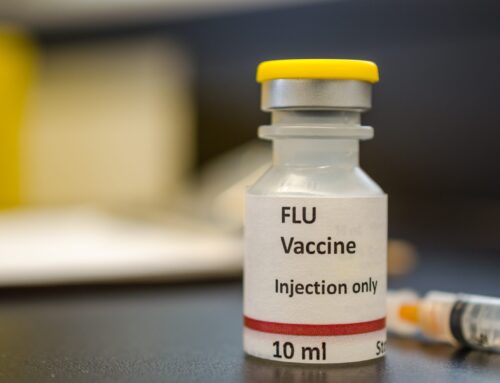The latest research in pancreatic cancer is focusing on early detection, personalized treatment, tumor microenvironment modulation, and the use of multi-omic biomarkers. Pancreatic ductal adenocarcinoma (PDAC), the most common form, remains one of the deadliest cancers due to late-stage diagnosis and chemoresistance. Below is a comprehensive summary of recent advancements (as of 2024–2025) and key biomarkers to be aware of:
Latest Research Trends in Pancreatic Cancer (2024–2025)
1. Liquid Biopsy for Early Detection
- Circulating tumor DNA (ctDNA) and exosomal RNA are being studied for early detection and monitoring minimal residual disease.
- New platforms (e.g. CancerSEEK 2.0) show promise in detecting early-stage PDAC with high specificity and sensitivity when combined with imaging.
2. Single-Cell and Spatial Transcriptomics
- Researchers are using single-cell RNA sequencing and spatial transcriptomics to map tumor heterogeneity and uncover cell populations driving treatment resistance and immune evasion.
- These technologies reveal unique gene expression signatures associated with aggressive subtypes.
3. Tumor Microenvironment (TME) Targeting
- Focus on cancer-associated fibroblasts (CAFs) and myeloid-derived suppressor cells (MDSCs) to reverse immune suppression.
- Clinical trials are evaluating agents targeting stromal remodeling (e.g., PEGPH20 – hyaluronidase) and immune checkpoints (e.g., CD40 agonists, anti-TIGIT therapies).
4. KRAS-Targeted Therapies
- KRAS G12D and G12C inhibitors (e.g., MRTX1133, AMG 510) are advancing in clinical trials with some preliminary responses in PDAC.
- Combination strategies (KRASi + immunotherapy or autophagy inhibitors) are being tested to overcome resistance.
5. Neoantigen Vaccines and mRNA Therapies
- Personalized mRNA vaccines (like Moderna’s mRNA-4157) are in early trials to induce immune responses tailored to individual tumor mutations.
- Promising early data from mRNA vaccine trials show potential in preventing recurrence post-surgery in resected patients.
6. Organoid-Based Drug Sensitivity Testing
- Patient-derived pancreatic tumor organoids are being used for real-time drug testing to inform personalized therapy choices.
- Integrated with genetic profiling, this can help optimize treatment plans.
Key Biomarkers in Pancreatic Cancer
Diagnostic/Early Detection
- CA 19-9
- Most widely used marker but limited for early detection and not elevated in Lewis antigen-negative individuals.
- CEA (Carcinoembryonic Antigen)
- Less specific but sometimes used alongside CA 19-9.
- Thrombospondin-2 (THBS2)
- Emerging serum biomarker, especially in combination with CA 19-9, for early detection.
- cfDNA mutations (e.g., KRAS, TP53)
- Found in plasma; promising for early detection and monitoring recurrence.
Prognostic
- KRAS Mutations (esp. G12D, G12V, G12C)
- Found in ~90% of PDACs; associated with poor prognosis and chemoresistance.
- TP53, SMAD4, CDKN2A
- Frequently mutated; loss of SMAD4 is linked to metastatic potential.
- Microsatellite Instability (MSI-H)
- Rare (~1%) but predicts response to checkpoint inhibitors.
Predictive (Therapy Response)
- BRCA1/2 and PALB2 mutations
- Suggest susceptibility to PARP inhibitors (e.g., olaparib); relevant for platinum-based chemo selection.
- HRD (Homologous Recombination Deficiency) scores
- Help identify tumors that may respond to DNA-damaging agents or PARP inhibitors.
- Tumor Mutational Burden (TMB)
- High TMB is rare but may predict immunotherapy benefit.
Immunological
- PD-L1 expression
- Low in PDAC, but expression may guide immunotherapy in selected cases.
- CD8+ T-cell infiltration / immune gene signatures
- Associated with better outcomes and guide patient selection for immune-based trials.
Recommended Biomarker Testing Panels
For a newly diagnosed or recurrent pancreatic cancer patient, consider:
| Category | Biomarkers/Tests |
| Genetic (germline) | BRCA1/2, PALB2, ATM, MLH1, MSH2, MSH6, PMS2 |
| Somatic tumor testing | KRAS, TP53, SMAD4, CDKN2A, MSI/dMMR, TMB |
| Liquid biopsy | ctDNA (KRAS, TP53), methylation profiling |
| Serum markers | CA 19-9, CEA, THBS2 (if available) |
| Emerging | GATA6 subtype (classical vs basal-like), exosome RNA |
Clinical Implications for Patients and Clinicians
- Personalized Therapy: Matching targeted therapies to biomarker profiles (e.g., BRCA mutations → PARP inhibitors).
- Clinical Trial Matching: Using genetic and immunologic markers to qualify patients for precision trials.
- Monitoring Disease Progression: Serial ctDNA or CA 19-9 can track response to therapy or detect early relapse.
- Family Screening: Germline testing for BRCA and other genes may identify relatives at risk and guide surveillance.





